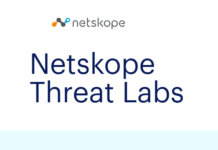
Businesses over the past years have come to rely significantly on information technology and networked applications for day-to-day operations as well as for creating competitive edges. This includes applications such as ERP, CRM, e-mail, employee portals and hosted Web sites; remote desktop applications; real-time communication applications such as voice and video over IP (VoIP); etc.
As a result, IT organizations are increasingly focused on the application business-continuity aspects of their responsibilities, which include application service level management, availability management, capacity management, etc. One of the most important datacenter infrastructure components, which have a large impact on application business-continuity are the datacenter’s wide area network (WAN) links and their connectivity to the Internet/ Intranet.
Effectively managing the datacenter’s WAN connectivity poses a few challenges such as maintaining 24/7 uptime, guaranteeing acceptable application performance, etc.
Challenges faced:
Link Up-time and Business Continuity
One of the main challenges faced by datacenter managers today in regards to their WAN connectivity is guaranteeing that the access to their datacenter is up 24/7. Meaning that datacenter managers must be able to detect failures far along the WAN path, and reduce as much as possible WAN connectivity downtime windows.
A report by Infonetics1 (Infonetics Research, “The Costs of Downtime: North American Medium Businesses 2006”) estimates that medium-sized businesses suffer around 28 hours of service-provider downtime and performance degradation every year, and that these outages cost, on average, almost $200,000 in lost revenue and productivity over the course of a year, representing the single largest source of downtime cost (about 22% of the total).
Most of the corporate applications are moving to public cloud hence accessibility is one of the important challenge.Also many customers are trying to achieve active/backup with UTM which does not solve the purpose of meeting better user experience over WAN links. This needs to be communicated.
The Active-backup Links Misconception
The simplest and most effective approach to dealing with WAN and Internet reliability issues is the concept of multi-homing and many organizations today implement some form of multi-homing. However, many multi-homing implementations still leave organizations at risk of downtime; this is due to a basic premise that states that having a (usually cheaper) idle backup link is a good enough solution. This premise is a misconception since, in the case of downtime of the active link, the time it takes to switch to the back-up link may cause significant business and revenue losses. For example, in the case of BGP4 or manual link switching, it may take three minutes or more to switch traffic between links, during which time there might not be any access to hosted Web sites.
Link Quality and Performance Degradations
WAN link business continuity is not only about guaranteeing that the datacenter access links are up and running, but rather that the links are up and running with acceptable performance overcoming performance bottle necks which might occur randomly.
The main factor causing application performance degradation is the fact that in most datacenters the same WAN connectivity infrastructure is used for both business-critical applications (ERP, CRM, VoIP, etc.) and non-business critical applications (P2P, file downloads, etc.). In such scenarios, the non-business-critical applications often utilize a large amount of bandwidth, causing starvation for the critical applications and degradation in their performance.
The second factor effecting application performance, is the WAN itself, which may suffer from network congestions and performance bottle necks.
Datacenter Consolidation and Virtualization
In order to significantly reduce costs, enterprises are moving to deploy less data centers, each consisting of more services, by centralizing the business’s applications, servers, hosting, and management. In addition, data center consolidation also enables organizations to meet regulatory and compliance, to drive globalization and to enable business continuity.
However, data center consolidation raises various challenges, the first challenge is the greater importance of keeping the datacenter up, this is due the larger amount of applications which now reside in the datacenter. The second challenge is maintaining good performance of the access connections which are now required to handle much more traffic.
The two aforementioned challenges are even more critical with the move to a centralized applications and/or virtualized infrastructure where business critical applications now reside in the datacenter and serve remote/ branch office users, requiring 24/7 availability and good performance both in the branch offices and datacenter.
In addition to the aforementioned challenges, the move to centralized applications within the datacenter may require companies to install expensive VPN lines between branch offices and the HQ.
The Lack of Business Oriented Link Management
As mentioned earlier, multi-homing is not a new concept, and many companies implement different types of multi homing solutions. One of the common solution configurations includes connecting the datacenter or branch offices using different types of links from different ISPs. For example a high SLA cable link in conjunction with a low SLA DSL link.
Whatever connectivity solution is implemented, a few questions relating to the flexibility and scalability of the solution may come up:
- How can I redirect similar types of traffic differently depending on the destination of the request? For example HTTP for download vs. HTTP for SAP.
- How can I assure business-critical traffic is routed over the high SLA links?
- How can I seamlessly upgrade my connections and add more links as I grow my business?
- How can I redirect traffic between my links according to cost model of the link?
Disregarding the above questions will cause the connectivity solution to be network aware as opposed to application aware. This means that traffic will be sent via the WAN links not according to its characteristics (type, source, destination, etc.) but rather according to the network behavior.
Conclusion
As previously discussed companies today run different types of applications over their WAN links, some are business critical applications for example CRM, ERP, VOIP, etc, and some are less critical such as Web browsing or file downloads. Traditional multi-WAN link load balancers do not provide the flexibility to differentiate between the different types of applications; this means that the use of WAN bandwidth is not managed and may result in noncritical applications taking up all the bandwidth of a high SLA line while business critical applications are left to be served over a low SLA line.
Therefore the need of the hour is a comprehensive set of user-defined application-aware redirection policies which allow the IT managers to define over which WAN link each application, type of traffic or even user is served depending on the scenario.
By: Nikhil Taneja (Managing Director – INDIA & SAARC, Radware)


















